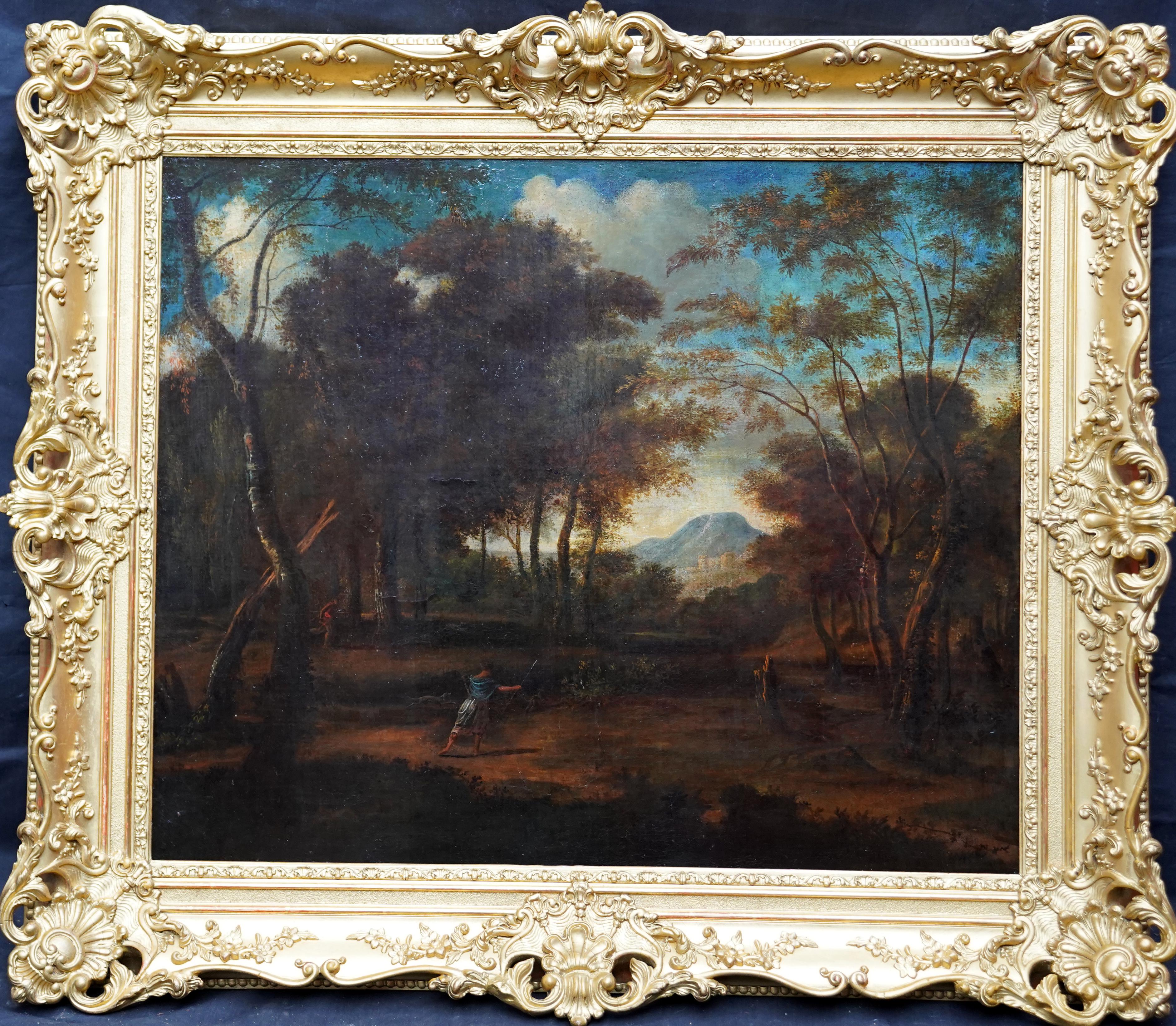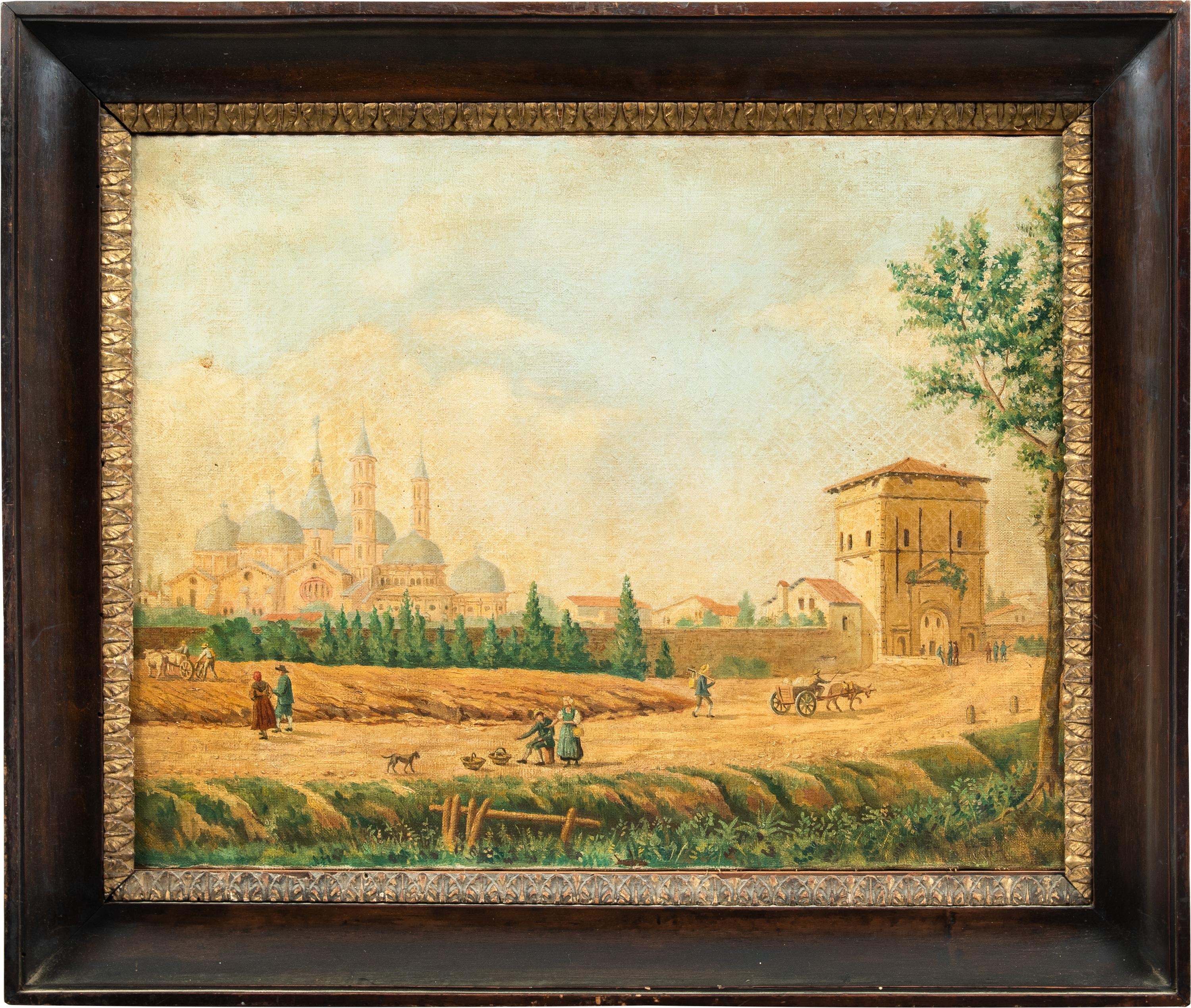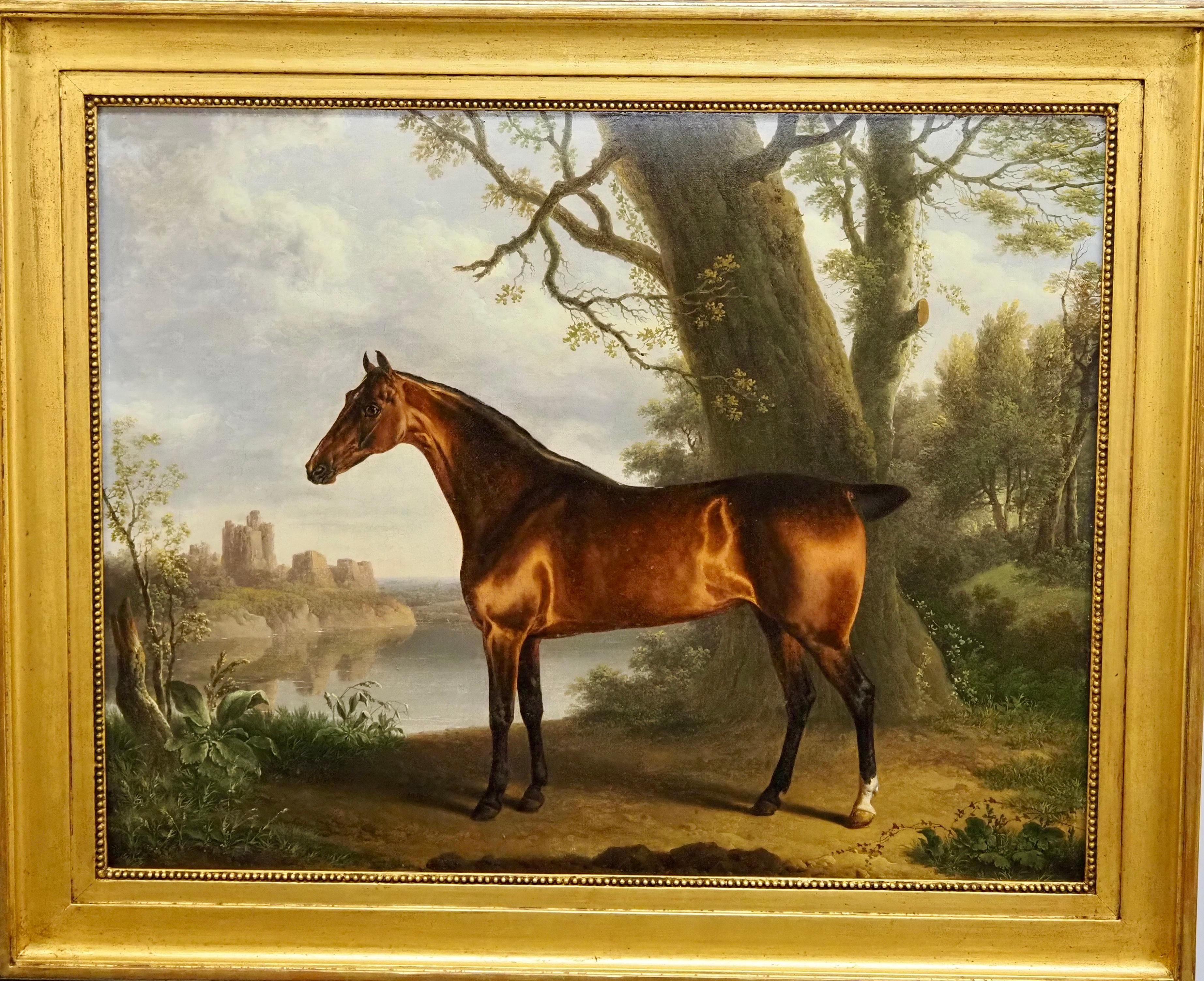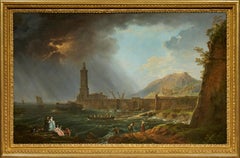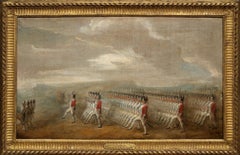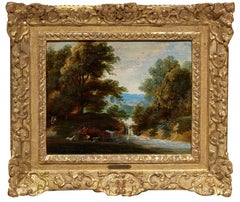
Waterfall Landscape Painting on Panel signed by Jacques d'Arthois Flemish School
View Similar Items
Want more images or videos?
Request additional images or videos from the seller
1 of 10
Jacques d'ArthoisWaterfall Landscape Painting on Panel signed by Jacques d'Arthois Flemish SchoolCirca 1660
Circa 1660
About the Item
- Creator:Jacques d'Arthois (1613 - 1686, Flemish)
- Creation Year:Circa 1660
- Dimensions:Height: 12.41 in (31.5 cm)Width: 14.18 in (36 cm)
- Medium:
- Movement & Style:
- Period:
- Condition:Monogrammed and signed on the back Louis XIV period gilded frame 20 x 24.5 cm (31.5 x 36 cm framed) This painting has been restored - condition report available upon request.
- Gallery Location:PARIS, FR
- Reference Number:1stDibs: LU156828181282
About the Seller
5.0
Vetted Seller
These experienced sellers undergo a comprehensive evaluation by our team of in-house experts.
Established in 2020
1stDibs seller since 2021
8 sales on 1stDibs
Typical response time: 2 hours
More From This SellerView All
- River Landscape with Shepherds and Architecture, a painting by Jan van BunnikBy Jan van BunnikLocated in PARIS, FRThis painting has been the subject of a study by the art historian Fabrizio Dassie (available on request), confirming its inclusion in Jan van Bunnik’s corpus. In this painting, Ja...Category
Late 17th Century Old Masters Landscape Paintings
MaterialsCopper
- The Arrival of the Storm, a painting by the school of Claude-Joseph VernetBy Claude-Joseph VernetLocated in PARIS, FRDuring his stay in Italy from 1734 to 1752, Joseph Vernet made several trips to Naples between 1737 and 1746, where he painted numerous maritime scenes. The pre...Category
1770s Old Masters Landscape Paintings
MaterialsOil, Canvas
- The Parade of Swiss Guards a painting on canvas by Gabriel de Saint-AubinLocated in PARIS, FRIn this painting, Gabriel de Saint-Aubin, the great chronicler of the reign of Louis XV, takes us to the annual parade of the Swiss Guards at the Plaine de...Category
1760s Old Masters Figurative Paintings
MaterialsCanvas, Oil
- Macbeth and the Three Witches a Painting on Panel by Francesco ZuccarelliBy Francesco ZuccarelliLocated in PARIS, FRThis painting, created during Zuccarelli's stay in England, represents the decisive moment when Macbeth, together with Banquo, meets the three witches who announce that he will be Ki...Category
1760s Old Masters Landscape Paintings
MaterialsOil, Wood Panel
- Italian Landscape with Jack Players, a painting by Gaspard Dughet (1615 - 1675)By Gaspard DughetLocated in PARIS, FRHere Gaspard Dughet offers us an idyllic vision of the Roman countryside. The stages follow one another in a perfectly structured composition, revealing here a lake, there travellers walking along, gradually leading our eye to the blue horizon. But behind its classical composition, this landscape is particularly interesting because of three anthropomorphic details that the artist has hidden, opening the way to a radically different interpretation... 1. Gaspard Dughet, a landscape artist in the light of Poussin Gaspard Dughet was born on June 4th, 1615 in Rome where his father, of French origin, was a pastry cook. He was probably named Gaspard in honour of his godfather Baron Gaspard de Morant, who was, or may have been, his father's employer. His older sister Jeanne married the painter Nicolas Poussin (1594 - 1655) on September 1st, 1630. The young Gaspard was apprenticed with his brother-in-law at the beginning of 1631, which led his entourage to name him Gaspard Poussin. The first preserved works of the painter date from the years 1633-1634 and were painted in Poussin’s studio. Around 1635, Gaspard Dughet became emancipated and began to frequent the Bamboccianti circle. In 1636, he became friends with the painter Jean Miel (1599 - 1656), but also with Pier Francesco Mola (1612 - 1666) and Pietro da Cortona (1596 - 1669). This was also the time of his first trips throughout Italy. The painter, although of French origin, appears never to have visited France. In 1646 he settled permanently in Rome. A recognized painter with a solid book of orders, he remained faithful to landscape painting throughout his life, alternating between cabinet paintings and large decorative commissions, using both oil and fresco. Nailed to his bed by rheumatic fever at the age of 58, he died on May 25, 1675. 2. Discovering an idealized landscape Beyond a relatively dark foreground that takes us into the landscape, we discover a vast bluish horizon: a plateau surrounded by deep ravines advances to the right, overhanging an expanse of water that sparkles below. A road winds through a mountainous mass as if leading us to the fortress that crowns it; another town appears in the distance at the foot of three conical mountains. The composition is rigorous, mineral, and structured by geometric volumes. The various stages in the landscape lead one to the next attracting the eye towards the horizon located in the middle of the canvas. The general impression is that of a welcoming and serene nature. In many places the paint layer has shrunk, or become transparent, revealing the dark red preparation with which the canvas was covered and accentuating the contrasts. Human presence is limited to three jack players, leaning against a mound in the foreground. Their long garments, which may evoke Roman togas, contribute to the timelessness of the scene. Close examination of the canvas reveals two other travellers on the path winding between the rocks. Made tiny by the distance, their introduction in the middle register, typical of Dughet's art, lengthens the perspective. While it is difficult to date the work of a painter who devoted his entire life to the representation of landscapes, it is certain that this painting is a work from his later years. The trees that occupied the foreground of his youthful compositions have been relegated to the sides, a stretch of water separates us from the arid mountains counterbalanced by two trees represented on the opposite bank. The introduction of this stretch of water in the middle of the landscape betrays the influence of the Bolognese and in particular of the Dominiquin (1581 - 1641) A number of similarities with a drawing in the British Museum might suggest a date around 1656-1657, since, according to Marie-Nicole Boisclair , it has been compared with the Prado's Landscape with the Repentant Magdalene, painted at that period. 3. Three amazing anthropomorphic details While some late Renaissance landscapes offer a radical double reading, allowing one to see both a face or a human body behind the representation of a landscape, it seems interesting to us to hypothesize that Gaspard Dughet had fun here by slipping in a few details that, taken in isolation, evoke human or animal figures. We will give three examples, looking closely at a cloud, the trunk of a broken tree and the top of a cliff. The main cloud could thus evoke a Christ-like face or that of an antique god...Category
1650s Old Masters Landscape Paintings
MaterialsOil
- Stag Hunting in the Vicinity of Nuremberg by a German Artist Peter von BemmelLocated in PARIS, FRThis small landscape shows a hunting scene: two riders are chasing a stag with their dogs at the edge of a forest. Signed by Peter von Bemmel, it is typical of the production of this...Category
1720s Old Masters Landscape Paintings
MaterialsCopper
You May Also Like
- Coastal See Landscape Antoniani Paint 18th Century Old master Oil on canvas ArtLocated in Riva del Garda, ITFrancesco Antoniani (Milan 1700/1710 - Turin 1775) workshop Fantasy coastal view with boats and figures Oil on canvas 56 x 138 cm. - framed 71 x 153 cm. Excellent condition This f...Category
18th Century Old Masters Paintings
MaterialsOil
$8,550 Sale Price20% Off - Coastal Landscape Capriccio Saeys Paint Oil on canvas 17/18th century FlemishLocated in Riva del Garda, ITJacob Ferdinand Saeys (Antwerp 1658 - Vienna 1726) and workshop Architectural capriccio with a coastal view at sunset and figures oil painting on canvas 60 x 91 cm., With frame 75 x...Category
17th Century Old Masters Paintings
MaterialsOil
$8,550 Sale Price20% Off - Diana Albani Mythological Paint Oil on canvas 17th Century Old master Italy ArtLocated in Riva del Garda, ITDiana and her nymphs surprised by Actaeon Francesco Albani (Bologna 1578 - 1660), workshop of oil on canvas 62 x 75 cm. framed 72 x 84 cm. (period frame) The proposed painting, de...Category
17th Century Old Masters Paintings
MaterialsOil
$5,586 Sale Price20% Off - Battle Horsemen Landscape Graziani Paint Oil on canvas 17th Century Old masterLocated in Riva del Garda, ITFrancesco Graziani, known as Ciccio Napoletano (active in Naples and Rome in the second half of the 17th century) Battle with clash of horsemen Oil on canvas 95 x 130 cm In period ...Category
17th Century Old Masters Paintings
MaterialsOil
- Allegory Triumph Of Art Over Time De Visch Paint 18th Century Oil on canvas ArtLocated in Riva del Garda, ITMatthias de Visch (La Reninge, 1701 - Bruges, 1765) Signed and dated on the edge of the globe: M. De Visch 1739. Allegory of the triumph of Art over Time (Music and Astrology that c...Category
18th Century Old Masters Paintings
MaterialsOil
- Storm See Water Landscape Vernet 18th Century Paint Oil on canvas Old masterLocated in Riva del Garda, ITClaude-Joseph Vernet (Avignon, 1714 - Paris, 1789) workshop of The Storm on the Lighthouse 1750/60 Technique: Oil on canvas Dimensions: 48 x 67 cm / framed 77 x 93 cm We share a highly pleasing work, a splendid marine executed by a talented painter from the workshop of the Frenchman Claude-Joseph Vernet, depicting a coastal view set in a Mediterranean port with the sea still stormy. The focal point of the composition is the large lighthouse at the entrance to the port, which, due to the power of the sea, was unable to bring to safety the ship that had crashed against the rocks, while the silhouette of a second sailing ship can be glimpsed in the distance. The canvas shows in full the pictorial, chromatic and narrative characteristics of the great master Vernet's coastal landscapes, characterised by the inimitable atmospheric conditions always hovering between darkness and light, storm and calm, instilling the observer with contrasting feelings, made even more intense by a palette of vibrant and highly contrasting colours. A similar composition, from which our author must necessarily have drawn, also attributed to the workshop of Claude Joseph Vernet is to be found in France, in Nantes, at the Musée d'Arts.  The effects of the light create a visual drama in the contrast between the darkness of the rain-laden storm clouds and the gash of clear sky that is opening up, pierced by the timid rays of light. The real magic of the painting is the painter's highly personal use of light and colour, with chiaroscuro effects that accentuate its three-dimensionality and movement. The compositional typology, as well as the quality of execution and attention to detail we are dealing with, are typical elements of the 'prototypes' conceived by the master, later taken up around the middle of the 18th century by his best pupils. Similar versions can be found in the most important international museums and private collections, belonging to a large series of paintings that the master created, together with his collaborators, during his stay in Italy. Vernet lived in Rome for twenty years (1734 - 1753), becoming particularly popular with English aristocrats who stopped there on their Grand Tour. International fame followed him from Rome to France, and to his English and French clients he added German princes...Category
18th Century Old Masters Paintings
MaterialsOil
$5,586 Sale Price20% Off
Recently Viewed
View AllMore Ways To Browse
Flemish Paintings Century
Ten Works By Ten Painters
Flemish Design
Antique Painting Cabinets
Saint Jacques
Old Master Flemish
Old English School
Old Master Painting Flemish
Antique Waterfall
Waterfall Light
17th Century Flemish Painting
Flemish School
Antique Cow Painting Paintings
Old Master Religious Art
Antique School Cabinet
17th Cabinet English
English 17th Century Cabinet
Antique Flemish Cabinet


